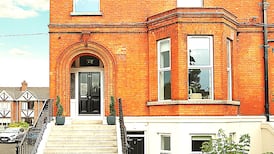There are property bubbles, and then there's Kinsale. Or so agent Malcolm Tyrell of Coholan Downing says of the forthcoming sale by public tender of five houses on a third of an acre in the heart of the town at a guide price of €350,000.
Not each. The price is for the lot, together on their little hill with their little gardens and their protected status.
The relatively modest price might be seen as bucking the trend of what Tyrell calls a “very strong” local property market. But these are the Southwell Alms Houses, now long past their function of providing homes for widows of Protestant tradesmen.
0 of 3
The religious bias ensured that the Southwell Trust, which commemorated the diplomat Sir Robert Southwell, was vested in a sole trustee, in the personal capacity of the presiding Church of Ireland bishop. It is not a church property, but as the Trust and the alms houses, were set up in 1682, the bishops over the years have keep the houses roofed, aired, serviced and occupied.
Now the Right Rev Paul Colton will wind up the unsustainable arrangement by which Sir Robert seems to have expected the houses, if not the widows, to survive in perpetuity.
Garden courtyard
There are five buildings in all: four cottages are grouped around a stone-flagged garden courtyard, all overseen by the Supervisor’s House. At about 678sq ft (63sq m), this is larger than the cottages (500sq ft/ 46.5sq m), still comprising just four rooms, two up, two down.
Southwell Arms was refurbished in 1970, and it’s been two years since the last tenants departed. The updating has not amounted to much more than the usual services and modern toilets and showers. All the same, “quaint” doesn’t cut it.
Built of rubble limestone, the facade is softened by the richly trellised, quarry-glazed windows with stone lintels and sills, by the slate-hung gable, and by the lead-clad barrel roofs to the dormers, which are trimmed with painted guttering. The Supervisor’s House, crested with the Southwell insignia, is reached by a flight of stone steps. Stone piers frame the fine wrought-iron gate.
The intention is to do the best for the future of this historic scheme. Tyrell says the successful bidder will not necessarily be the highest one, and the sale will have to satisfy the requirements of the Charities Regulatory Authority.
Still, it seems that the purchaser, while bound by the listed status, will not be subject to the same restrictions as those imposed on the bishop of the day, who could do little other than maintain it or else exercise his legal right to sell.
So yes, the individual dimensions are small, but the composition of the settlement on its perch above the harbour is utterly inviting to anyone with an eye for style, heritage – and potential.














